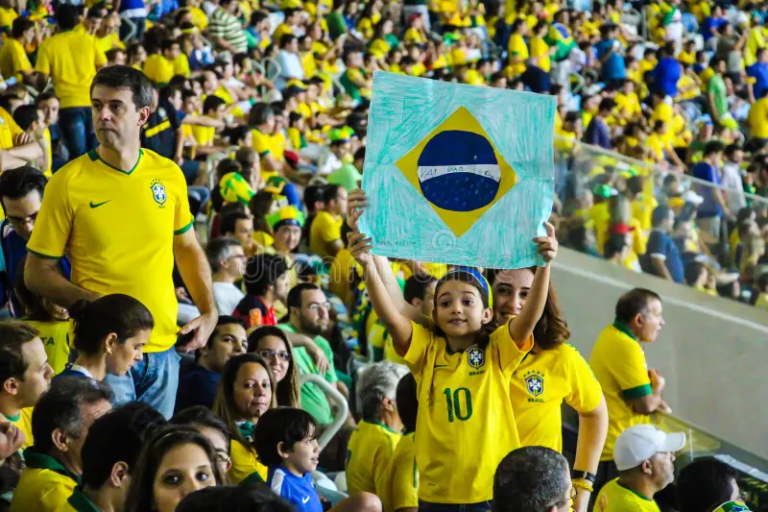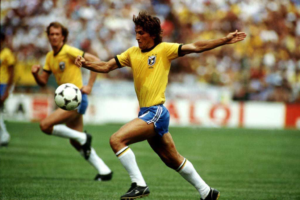Brazilian football, often synonymous with flair, creativity, and samba, has a rich and storied history. Known for producing some of the world’s greatest football talents, Brazil’s national team, the Seleção, has been a dominant force on the global stage. Over the decades, Brazil’s football tactics have evolved significantly, reflecting changes in the game, the influence of different coaches, and the emergence of new football philosophies. This article delves into the evolution of Brazil’s football tactics, examining key periods and the impact of various tactical approaches on their success.
Football is a popular sport that we all love. If you don’t want to miss all the football matches of 2024. Want to enjoy all football games live. Socolive can definitely be a working website for you.
The Early Years: 1930s to 1950s
Brazil’s football journey began in earnest in the 1930s, with their first World Cup appearance in 1930. During this period, Brazilian football was heavily influenced by European tactics, particularly those from England and Italy. The 2-3-5 formation, also known as the “pyramid” formation, was prevalent. This system relied on a strong attacking line of five forwards, with three midfielders providing support and two defenders holding the back line.
The 1950 World Cup, held in Brazil, was a pivotal moment in the country’s football history. Despite a heartbreaking loss to Uruguay in the final, Brazil showcased a more fluid and attacking style of play. The introduction of the 4-2-4 formation marked a significant shift. This formation, which featured four defenders, two midfielders, and four attackers, allowed for greater balance between defense and attack. The 4-2-4 system would later become a hallmark of Brazilian football.
The Golden Era: 1958 to 1970
The late 1950s to the early 1970s is often considered the golden era of Brazilian football. Under the guidance of coaches Vicente Feola and Aymoré Moreira, Brazil won three World Cups in 1958, 1962, and 1970. The 4-2-4 formation played a crucial role in these successes.
In the 1958 World Cup, Brazil’s tactical flexibility and innovation stood out. The team’s fluidity allowed players like Pelé and Garrincha to thrive. Pelé, in particular, became a global icon, showcasing his dribbling, speed, and goal-scoring prowess. The 4-2-4 formation enabled Brazil to attack with flair while maintaining defensive solidity.
The 1962 World Cup saw Brazil adapt to the absence of Pelé, who was injured early in the tournament. The team continued to employ the 4-2-4 formation, with Garrincha and Amarildo stepping up to fill the void. Brazil’s ability to adapt tactically and rely on collective strength was key to their triumph.
The 1970 World Cup in Mexico is often regarded as the pinnacle of Brazilian football. Coached by Mário Zagallo, a former player from the 1958 and 1962 squads, Brazil played with unparalleled flair and creativity. The 4-2-4 formation was modified to a more flexible 4-3-3, allowing for greater midfield control. The team, featuring legends like Pelé, Jairzinho, and Tostão, mesmerized the world with their attacking prowess, culminating in a 4-1 victory over Italy in the final.
The Transition Period: 1970s to 1990s
The 1970s and 1980s saw a shift in global football tactics, with a greater emphasis on defense and organization. Brazil, known for its attacking style, had to adapt to these changes. The 1974 World Cup saw Brazil adopting a more conservative approach under coach Zagallo, transitioning to a 4-3-3 formation that prioritized midfield stability.
The 1982 World Cup team, coached by Telê Santana, is remembered for its attacking brilliance despite not winning the tournament. Santana’s 4-2-2-2 formation, also known as the “magic square,” featured two attacking midfielders and two forwards. The team, led by Zico, Sócrates, and Falcão, played an attractive, attacking brand of football. However, defensive frailties led to a quarterfinal exit against Italy.
The late 1980s and early 1990s marked a period of tactical experimentation for Brazil. Coaches like Carlos Alberto Parreira and Sebastião Lazaroni introduced more pragmatic approaches. The 1990 World Cup saw Brazil employ a 3-5-2 formation under Lazaroni, focusing on defensive solidity. This shift was a response to the increasingly physical and tactical nature of international football.
For Vietnamese football fans, this website Socolive tv can be very helpful for you to watch football games with commentary in Vietnamese language.
The Modern Era: 1990s to Present
The 1994 World Cup marked a return to glory for Brazil, with Parreira leading the team to victory. The 4-4-2 formation used in the tournament emphasized defensive organization and counter-attacking. The midfield duo of Dunga and Mauro Silva provided a solid foundation, allowing creative talents like Romário and Bebeto to shine.
The 1998 World Cup saw Brazil reach the final under coach Zagallo, now employing a 4-2-2-2 formation. Despite losing to France in the final, the team showcased tactical versatility and attacking flair, with Ronaldo emerging as a global superstar.
The 2002 World Cup, won by Brazil under coach Luiz Felipe Scolari, saw the emergence of the “magic trio” of Ronaldo, Rivaldo, and Ronaldinho. Scolari’s 3-4-1-2 formation allowed for a dynamic attacking style while maintaining defensive stability. Brazil’s success was marked by a balance between creativity and tactical discipline.
In the years following the 2002 triumph, Brazil’s tactics continued to evolve. Coaches like Dunga and Tite emphasized defensive solidity and organization. The 2014 World Cup, held in Brazil, was a mixed experience. Despite a strong start, Brazil’s tactical frailties were exposed in a humiliating 7-1 semifinal loss to Germany.
Under Tite, Brazil has returned to a more balanced approach. The 4-1-4-1 formation, used in the 2018 World Cup, focused on defensive stability and quick transitions. The emergence of players like Neymar, Philippe Coutinho, and Gabriel Jesus has allowed Brazil to maintain their attacking flair while being more disciplined defensively.
Conclusion
The evolution of Brazil’s football tactics reflects the dynamic nature of the sport and the need for adaptation. From the early days of the 2-3-5 formation to the modern era’s flexible approaches, Brazil has continuously evolved to meet the demands of international football. The balance between attacking creativity and defensive solidity has been a hallmark of their success. As Brazil looks to the future, the continued development of tactical approaches will be crucial in maintaining their status as a footballing powerhouse. The legacy of Brazil’s football tactics is a testament to the country’s rich footballing heritage and its ability to innovate and adapt on the global stage.


